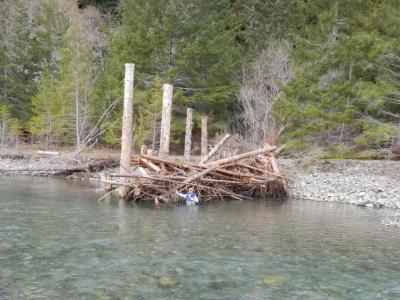Cool Matters: Emerging Stream Temperature Science
Session Coordinator:
Eli Asarian, Riverbend Sciences
Water temperature has long been recognized as a key limiting factor affecting the distribution and abundance of salmonids in rivers and streams, particularly for species such as coho salmon, spring-run chinook salmon, and steelhead which oversummer in freshwater and thus require year-round cool water. Technological advances through past decades and recent years have facilitated development of new tools and approaches to studying water temperature which have yielded new insights. In addition, long-term monitoring programs are accumulating data and tracking the response of stream temperatures to disturbance events, climatic variation, and changes to land and water management. Much has been learned, but much is yet to be discovered. This session will feature presentations with new science on water temperature in freshwater salmonid habitats, with topics such as: new approaches to monitoring, analyzing, and modeling stream temperatures; research into physical processes affecting thermal dynamics, such as riparian vegetation, smoke and fog, and exchange between surface water and ground water; the importance of thermal refugia and thermal diversity; climate change modeling and projections; and assessments of long-term trends.
Spatial and Temporal Patterns of Riparian Shade, Light, and Stream Temperature in Response to Riparian Thinning in Redwood Headwater Streams
David Roon, Oregon State University
Streams That Cool Down as Summer Heats Up: The Effects of Seasonal Changes in Riverine Canopy on Water Temperature
Ann Willis, University of California, Davis, Center for Watershed Sciences
Wildfire Smoke Reduces Summer River Water Temperatures, Potentially Benefiting Cold-Water Fishes
Frank Lake, PhD, US Forest Service Pacific Southwest Research Station
Potential Effects of Climate Change on Thermally Suitable Habitat for Salmonids in the Salmon River, California
Eli Asarian, Riverbend Sciences, and Jay Stallman, Stillwater Sciences
Predicting Temporally and Spatially Continuous Estimates of Stream Temperature in Non-Monitored Years Using Simple Covariates
Jared Siegel, South Fork Research, Inc.
Freshwater Temperature Response to Five-year Drought in Two Trout-bearing Streams of Southern California
Andre Sanchez, Resource Conservation District of the Santa Monica Mountains

